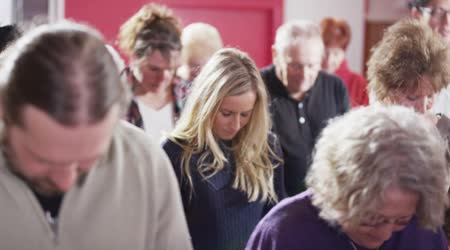Friday Frivolity: Know your ashes
Next week Lent begins and all the Western Catholics will be getting their ashes. Make sure you know the different types!

"We are travellers…not yet in our native land" – St. Augustine
Next week Lent begins and all the Western Catholics will be getting their ashes. Make sure you know the different types!


 If you have ever visited an Eastern Catholic parish or Eastern Orthodox parish, you will have noticed that whenever the Trinity or any of the divine names are mentioned, the priest and people will cross themselves and incline their heads in a bow, even if only slightly.
If you have ever visited an Eastern Catholic parish or Eastern Orthodox parish, you will have noticed that whenever the Trinity or any of the divine names are mentioned, the priest and people will cross themselves and incline their heads in a bow, even if only slightly.
This is a practice I really like and I’ve often wished that this would be more present at western parishes. Well, I recently found out that, at least in theory, it should happen there too…
The place where you discover this is the General Instruction of the Roman Missal (GIRM), which is basically a commentary on the Missal, explaining how Mass should be celebrated:
A bow of the head is made when the three Divine Persons are named together and at the names of Jesus, of the Blessed Virgin Mary and of the saint in whose honor Mass is being celebrated.
– GIRM 275
How about that?! I did a little more digging and found out that this practice has considerable antiquity. For example, in the 13th Century, the Fathers of the Council of Lyons seem to have been inspired by the epistle to the Philippians where St. Paul talks about how “at the name of Jesus every knee should bow, in heaven and on the earth and under the earth” (Philippians 2:9-10). Here’s what the Council said:
Each should fulfill in himself that which is written… that at the name of Jesus every knee should bow; whenever that glorious name is recalled, especially during the sacred mysteries of the Mass, everyone should bow the knees of his heart, which he can do even by a bow of his head.
– Council of Lyons II, Constitution 25
So, even if it’s not common practice in your parish, I’d invite everyone to follow the guidance offered to us by the GIRM and to honour the Lord, His Mother and His Saints with this small gesture of reverence.
A couple of years ago, Jason Stellman, a Presbyterian pastor converted to Catholicism. I remember when he converted that there were lots of nasty comments in his Comment Box saying that he was converting for the “fame” and the “money” which apparently comes with being a Catholic convert. Well, two years later, on the anniversary of his entrance into the Church, Jason posted a reflection concerning his life now he’s Catholic. It’s a sobering read.
If any man would come after me, let him deny himself and take up his cross and follow me. – Mark 8:34
By the way, if you’re ever looking to study Paul’s epistle to the Galatians, I can thoroughly recommend the six-part series freely available on Jason’s website. It’s really good.

 A little while ago I wrote a post about the earliest known depiction of the crucixion, the Alexamenos Graffito. During the ensuing Facebook discussion, the subject of the use of the cross in Christian art and worship was raised. This reminded me that I had myself that I would do a blog series on early Christian symbolism.
A little while ago I wrote a post about the earliest known depiction of the crucixion, the Alexamenos Graffito. During the ensuing Facebook discussion, the subject of the use of the cross in Christian art and worship was raised. This reminded me that I had myself that I would do a blog series on early Christian symbolism.
I’ve written before about abbreviations such as IHS and INRI, but I would like to expand upon this by examining early Christian symbols. So with that in mind, I’ve decided to do that today, beginning with probably the best known Christian symbol, the cross.
It may come as a surprise to many people to find out that, in the first few centuries, the use of the cross in Christian art and worship is somewhat unclear. Some historians and archeologists see this symbol throughout the historical record, while others claim that the cross is almost completely absent.
At first glance this might seem strange. Why is there such disagreement? Over the remainder of this post we will see why…

A hermit was asked how a watchful monk could prevent himself from being shocked if he saw others returning to the world.
He replied, “A monk should remember hounds when they are hunting a hare. One of them glimpses the hare and gives chase, the others merely see a hound running, and run some way with him, when they get tired and go back to their tracks. Only the leading house keeps up the chase until he catches the hare. He is not deterred by the others who give up, he thinks nothing of cliffs or thickets or brambles, he is often pricked and scratched by thorns, but he keeps on until he catches the hare. So the man who runs after the Lord Jesus aims unceasingly at the cross, and leaps over every obstacle in his way until he comes to the Crucified.
– De vitis Patrum, Sive Verba Seniorum, Liber V
 The other day a friend of mine sent me a text message saying her coworker was mourning. It was the anniversary of her husband’s death in Afghanistan. Her coworker was asking the question: “Why would God let this happen?”. My friend asked “What should I say?”. Here’s the text message I wrote in reply:
The other day a friend of mine sent me a text message saying her coworker was mourning. It was the anniversary of her husband’s death in Afghanistan. Her coworker was asking the question: “Why would God let this happen?”. My friend asked “What should I say?”. Here’s the text message I wrote in reply:
I would say something like “I could talk about some of the different reasons why bad things happen to good people (fallen world, free will, sinful man, God’s plan etc.), but the truth is I don’t know… None of us fully comprehends why terrible things like this happen.
What I do know is that God is the expert at drawing good out of bad, bringing healing out of pain. When Jesus hung on the cross it looked to the world like defeat, but out of the cross came victory over death so Jesus endured it for love of the world.
Your husband, no doubt, joined the military because he thought that it was the right thing to do, to protect the country and people he loved. Jesus did the same.
I can’t explain specifically WHY your husband died, but I CAN say that, if Jesus’ death shows us anything, it’s that suffering is not meaningless and that great acts of love and sacrifice can change the world”
When we encounter someone who is suffering, there is always the temptation to talk about big theological concepts of God’s will, His sovereignty and the fallen nature of humanity. However, in my experience, when people are suffering, this kind of talk is neither helpful nor comforting. We can only point them to the Cross. Apart from the Cross, suffering has no meaning or purpose.
Even then, words are often ineffective. Actions speak much louder. When someone is suffering and I don’t know what to say, there’s a temptation to just avoid that person since I can’t “do” anything. We must fight that temptation! Sometimes all I really need to do is just show up. Be there for my friend. Listen to her. Cry with her. Pray with her. If that person is English, make a cup of tea 🙂
The presence of a friend during a time of suffering speaks much more loudly of the love of God than any words ever could. Love them like Jesus.
Mark Hall, Casting Crowns